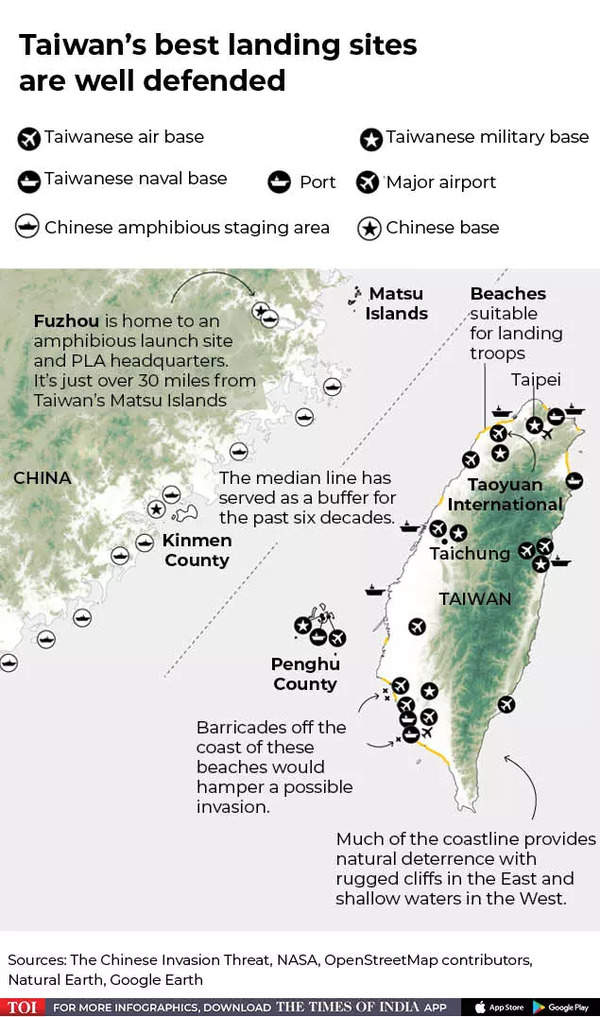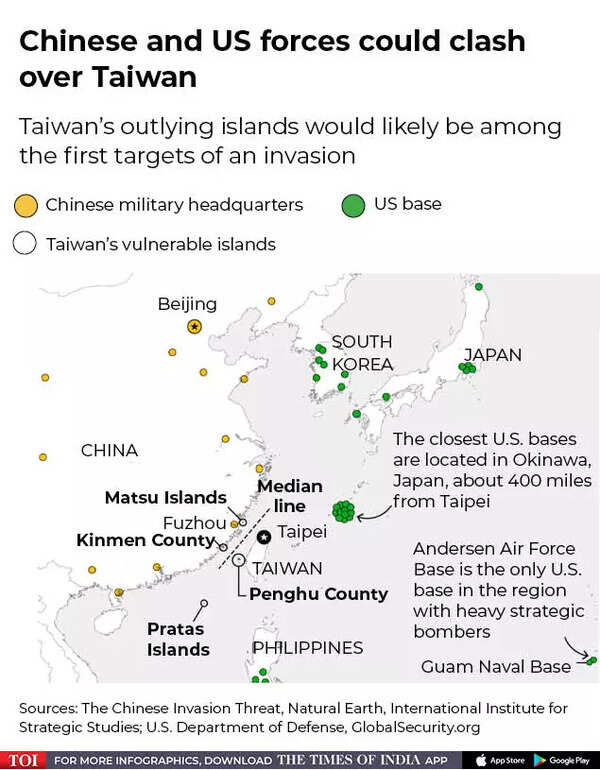Last week, China held a massive four-day drill in the Taiwan Strait in a bellicose response to US House Speaker Nancy Pelosi’s visit to Taiwan. During these exercises, the People’s Liberation Army (PLA) performed realistic joint combat scenario drills in sea and air space around Taiwan, practicing island capture drills and bomber deterrent flights in the Taiwan Strait.
The PLA said the drills were “a test for real operations”.

China’s military maneuvers have now prompted a group of US defense experts in Washington to focus on their own simulation of a possible – but for now entirely hypothetical – US-China war on the island.
According to a Bloomberg report, an unofficial game is taking place in an office building near the White House. It predicts a US military response to a Chinese invasion in 2026.
While experts are largely bringing the American perspective to the table, the hypothetical results show that a US-Taiwan victory, if there is one, could come at a huge cost.

Predict sad results
The Wall Street Journal reported that the 7-hour war game, which simulates three weeks of combat, illustrated what a daunting task it would be for China to launch a 100-mile amphibious invasion across the Taiwan Strait.
According to the report, the drill included “Red” (China) and “Blue” (United States) teams.
The simulation also includes maps, 20-sided dice and complex computer calculations.
The imagined conflict is set in 2026 and each side is limited to the military capabilities it has demonstrated in real life.
“The opposing teams alternate with maps of the Pacific region populated with game pieces that denote military dispositions, conferring strategies. They then move to a detailed map of Taiwan. Computers calculate everything from the size of the aircraft runways to the time taken by the aircraft. submarines to rearm. The dice introduce an element of randomness, “the report states.
The game basically assumes a scenario in which China attacks Taiwan and the United States, which officially has a policy of “strategic ambiguity” on Taiwan, comes to Taipei’s aid.
There are no nuclear weapons involved in the scenario.
The game plays a scenario in which the Chinese military fires ballistic missiles at US airbases in Japan and an aircraft carrier strike group in the Pacific, destroying several fighter squadrons and sinking the aircraft carrier and other US ships.
After bombing the island’s infrastructure and limiting the movement of Taiwanese troops, China lands more than 20,000 troops on the island’s southeastern coast and moves north in hopes of seizing an airport port while avoiding cities.
“… As the days go by, the momentum shifts to the United States and Japan. Despite horrific losses of ships, planes and personnel, American forces bomb Chinese ports, eliminate ship pegs, and successfully attack the spot. weak Beijing: the amphibian dispatches its needs to transport troops and supplies to Taiwan, “the report said.
This is just one of many scenarios that will last until September, with retired US generals and former Pentagon officials bent over like chess players on the tables alongside analysts from the CSIS think tank.
“In 18 of the 22 game rounds played up to this point, Chinese missiles sink much of the US and Japanese surface fleets and destroy hundreds of aircraft on the ground,” a former White House defense budget analyst told Bloomberg. . that Allied air and naval counterattacks pound the exposed Chinese amphibious and surface fleet, eventually sinking about 150 ships.
War games are often played by governments and outside organizations around the world. But the instructions to the CSIS project participants say that although the Pentagon “has conducted many of these war games, they are all classified. As a result, information in the public domain is extremely limited. This project will fill that gap in public knowledge and thus encourage discussion of the structure and policies of US forces. ”
